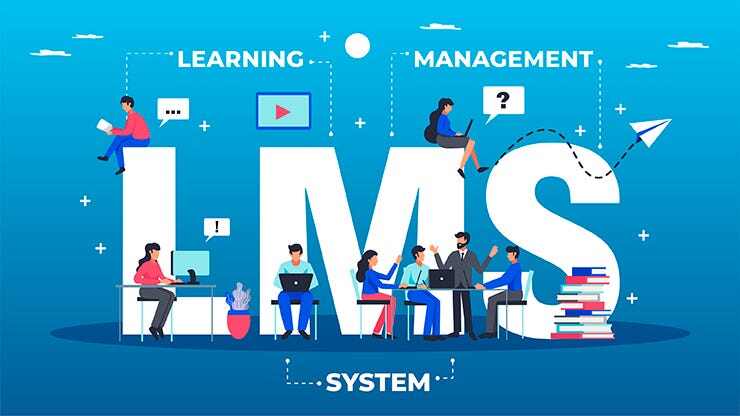Comprehensive Guide to IT Management & Support for Schools
The article discusses the increasing integration of technology in schools and the importance of effective IT management and support. It highlights...
You must be logged in to the LATechNet portal to view additional resources.
4 min read
 Aria - LATechNet Team
:
Mar 20, 2025 12:25:31 PM
Aria - LATechNet Team
:
Mar 20, 2025 12:25:31 PM

Have you ever wondered how schools manage to smoothly run online classes, track student progress, and share assignments digitally? The secret lies in Learning Management Systems, or LMS for short. Simply put, an LMS is an online platform designed to help teachers organize, deliver, and monitor educational content easily and efficiently.
Especially after the pandemic, LMS platforms have become super important for K-12 schools. When classrooms had to quickly shift online, these systems became lifesavers, ensuring learning continued without major disruptions. Even now, as schools return to normal, LMS technology remains essential because it supports flexible learning styles, promotes collaboration, and helps teachers give timely feedback.
In this article, we'll explore and review some of the best LMS platforms specifically suited for K-12 schools, helping educators like you find the ideal tool for your classroom.
In recent years, we've seen an incredible shift in how K-12 schools use Learning Management Systems (LMS), especially after the COVID-19 pandemic hit. With schools suddenly needing to switch to remote learning, LMS adoption skyrocketed. In fact, in 2020 alone, the number of schools implementing LMS for the first time nearly tripled compared to previous years (listedtech.com). Even after returning to physical classrooms, many educators continue to rely on these platforms for blended learning, homework assignments, and classroom management, signaling a lasting change in educational technology usage.
Overall, educators and students seem quite happy with LMS experiences—91% of K-12 users express satisfaction with their chosen platforms (capterra.com). However, some schools aren't fully tapping into all available features. This underuse often results from insufficient training or mismatches between available features and actual classroom needs (gartner.com). To truly benefit students, it's crucial for schools to select LMS solutions carefully, keeping educator and student needs at the forefront and providing ample training to ensure everyone can fully utilize the system's potential.
Google Classroom stands out as a favorite among educators, with over 40% of teachers relying on it in their classrooms (weareteachers.com). Its simplicity and seamless integration with the widely-used Google Workspace make it effortless for teachers and students to adopt. Additionally, the platform is completely free, making it accessible for schools of all sizes. However, its simplicity comes at a cost—Google Classroom lacks some advanced features offered by specialized LMS platforms, limiting its scalability in more demanding educational environments.
Canvas continues to grow in popularity, capturing 28% of the K-12 LMS market by 2024 (listedtech.com). Educators appreciate its comprehensive features, including robust tools, detailed analytics, and excellent support services. Canvas offers a versatile platform capable of handling complex learning tasks, but this versatility can sometimes be overwhelming. The wealth of features may create a steeper learning curve for teachers and students who are new to digital platforms, requiring extra training and support.
With a notable 22% market share in 2024, Schoology emphasizes collaboration and community (listedtech.com). Its user-friendly interface encourages interaction among students and teachers, supporting group projects, discussions, and resource sharing. Schoology’s community-based approach fosters engagement and teamwork. However, compared to Canvas, Schoology offers fewer options for integrating third-party applications, which could limit customization for schools seeking highly specialized digital solutions.
Picking the right LMS can feel overwhelming, but if we break it down into clear steps, it becomes a lot simpler. First, start by clearly defining your educational objectives—what exactly do you want your students and teachers to achieve through technology? Be sure to consider your school's current tech setup to ensure compatibility.
Ease of use is crucial. Teachers and students shouldn't struggle to navigate the LMS; otherwise, the amazing features won't matter much. Good training support from the LMS provider can really help teachers feel confident and excited about using the system.
Budget is another biggie. You don't always need the fanciest platform—just one that fits your school's needs without breaking the bank. Also, check how well the LMS integrates with the tools you're already using. Last but not least, think ahead. Choose an LMS that can grow with your school's future needs, ensuring it stays helpful and relevant for years to come.
Introducing an LMS to your school can feel overwhelming, but taking a thoughtful, step-by-step approach makes it manageable and effective. First, clearly outline your goals and communicate these to everyone involved, so teachers and students understand the value of the LMS. Next, offer engaging, hands-on training sessions, so educators and students feel confident using the new platform—this prevents your LMS from becoming just another unused tool.
Once your LMS is in place, keep a close eye on how it's working. Regularly check if it's meeting your school's needs by gathering feedback from teachers, students, and parents. This ongoing monitoring helps you quickly spot challenges and make adjustments.
Finally, invest in building everyone's digital skills. Simple activities, like short workshops or peer-to-peer mentoring, can boost digital literacy, ensuring everyone gets the most out of your LMS and feels comfortable in a digital learning environment.
When it comes to choosing the right Learning Management System (LMS) for your K-12 school, LATechNet is like your trusted friend in educational technology. Specializing solely in IT services for education, they deeply understand your unique challenges and needs. LATechNet helps schools select an LMS that perfectly fits their specific requirements and budget, ensuring each solution is tailored for maximum impact.
Once an LMS is chosen, LATechNet offers friendly, professional training sessions for teachers and staff, empowering them to confidently use all available tools and capabilities. And their support doesn't stop there! They provide ongoing technical assistance and reliable system management, keeping your LMS running smoothly at all times. Plus, their experts guide you on seamlessly integrating your LMS with existing systems and scaling solutions as your school grows—always prioritizing robust data security and full compliance with education regulations.
Learning Management Systems (LMS) have truly transformed the way K-12 schools deliver education, making teaching and learning more interactive, engaging, and personalized than ever before. By streamlining classroom management, simplifying content delivery, and enhancing communication between teachers, students, and parents, these platforms are powerful tools for boosting educational outcomes. However, choosing the right LMS isn't just about picking the platform with the most features—it's about finding the one that best fits your school's unique needs and goals. That's why it helps tremendously to have expert IT support when selecting and managing your LMS. Specialists in educational technology can guide you through the process, ensuring you get the most out of your investment and making sure your students and teachers thrive in a supportive digital learning environment.

The article discusses the increasing integration of technology in schools and the importance of effective IT management and support. It highlights...

The article examines the transformative impact of educational technology (EdTech) on modern teaching and learning environments. Key trends include...

Introduction In today's rapidly changing digital landscape, having a robust and future-proof IT infrastructure is critical for K-12 schools. Just...